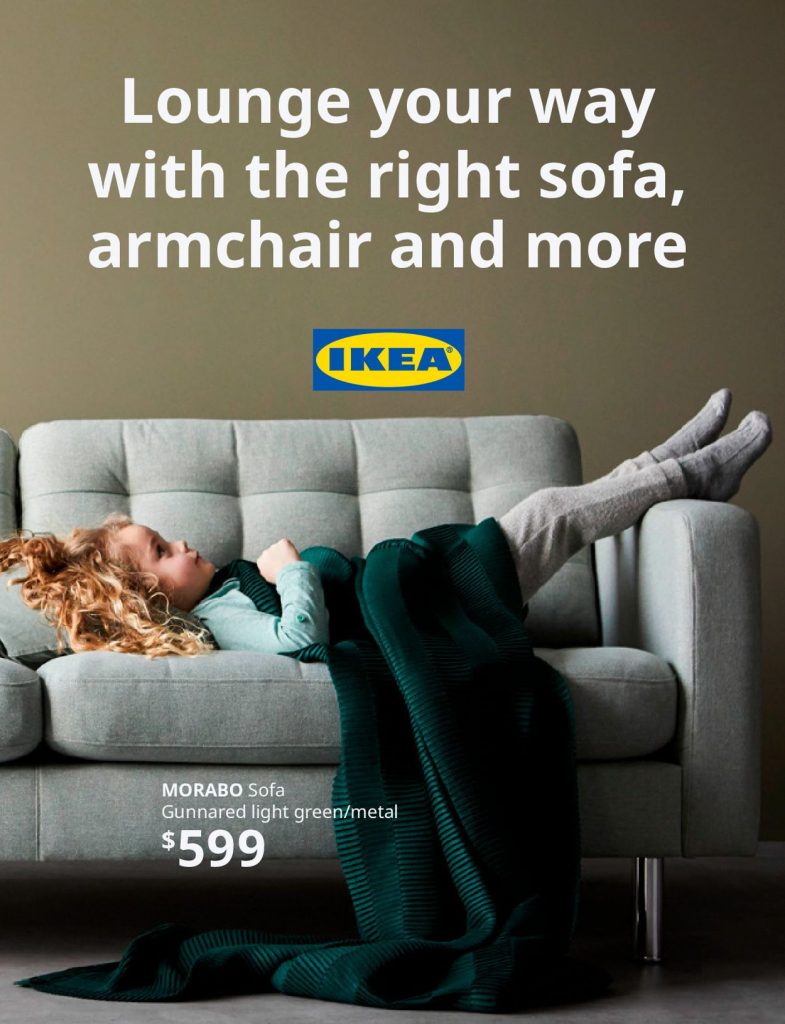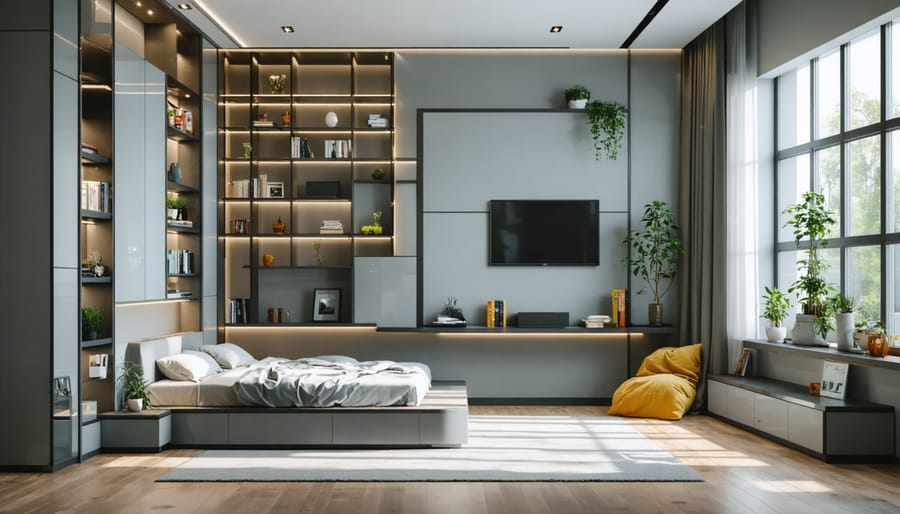
10 Genius Space-Saving Ideas That Make Tiny Rooms Feel Like Mansions
Transform cramped quarters into sophisticated living spaces by mastering the art of tiny space design. Modern urban living has revolutionized how we approach small-space solutions, turning spatial constraints into opportunities for creative expression and functional innovation. From micro-apartments to compact urban lofts, interior designers are pioneering ingenious strategies that maximize every square inch while maintaining style and comfort.
Smart design in tiny spaces isn’t just about selecting smaller furniture – it’s about reimagining how spaces can flow, function, and feel. By embracing vertical storage, incorporating multi-functional furniture, and strategically using light and color, even the most modest spaces can become extraordinary environments. Explore how transforming tiny spaces can push the boundaries of conventional interior design to create environments that feel simultaneously expansive and intimate.
Whether you’re working with a studio apartment, a tiny house, or a compact urban dwelling, the principles of small-space design offer a pathway to creating homes that are both beautiful and highly functional. The future of urban living demands these clever solutions, and mastering them transforms challenging spatial constraints into opportunities for exceptional design.
Multi-Functional Furniture Solutions
Transforming Furniture
In the world of tiny space living, space-saving furniture ideas are absolute game-changers. Murphy beds lead the charge in transforming furniture solutions, cleverly hiding away during the day to free up valuable floor space. These ingenious systems can even incorporate desks or shelving, creating a dual-purpose area that serves as both bedroom and home office.
Fold-down tables are another brilliant addition to any compact space. Whether mounted to the wall or designed as part of a storage unit, these tables can accommodate everything from intimate dinners to work sessions, then disappear when not needed. Many models feature built-in storage compartments for plates or office supplies, maximizing their functionality.
Convertible sofas have evolved far beyond the clunky futons of yesteryear. Today’s designs offer sophisticated styling and seamless transformation from comfortable seating to supportive sleeping surfaces. Look for options with hidden storage compartments beneath the seats – perfect for stowing extra blankets or seasonal items.
The key to success with transforming furniture is choosing pieces that transition smoothly and serve multiple purposes without compromising on style or comfort. Consider mechanisms that are easy to operate and built to last, ensuring your space remains both functional and welcoming.
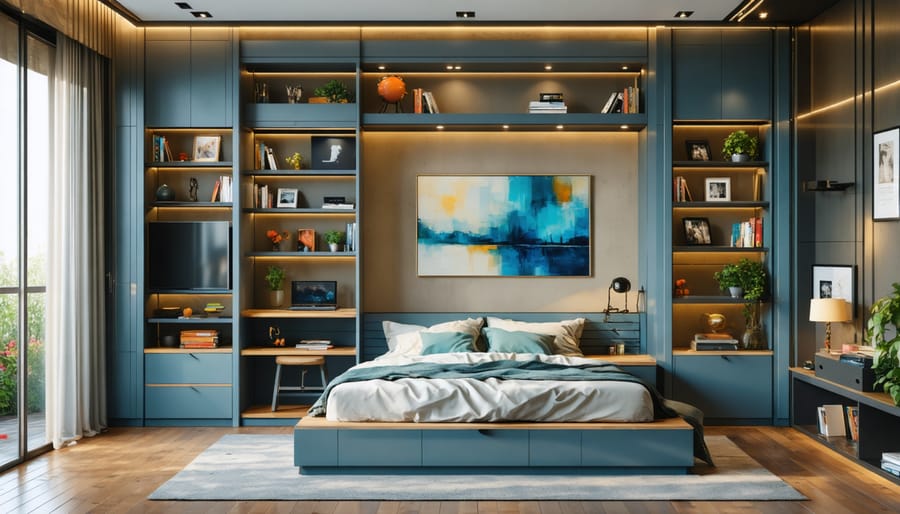
Built-in Storage Solutions
In tiny spaces, every piece of furniture needs to pull double duty, and that’s where creative storage solutions become essential. Start with your seating arrangements – opt for ottomans and benches with hidden compartments perfect for storing blankets, books, or seasonal items. Coffee tables with built-in shelving or drawers offer both style and functionality, while bed frames with integrated storage drawers maximize otherwise wasted space beneath your mattress.
Consider transforming dead space into storage opportunities. Install floating shelves in awkward corners, use door-mounted organizers, and invest in furniture with vertical storage capabilities. Hollow stairs can become pull-out drawers, while window seats can double as storage chests. Multi-functional pieces like murphy beds with integrated desks or dining tables that fold away when not in use are game-changers in compact spaces.
Don’t overlook the potential of your walls – install modular shelving systems that can be reconfigured as your needs change. Kitchen cabinets can extend to the ceiling, utilizing often-ignored vertical space, while slim rolling carts can fit between appliances or in narrow gaps. Remember, the key is choosing pieces that serve multiple purposes while maintaining a clean, uncluttered appearance.
Vertical Space Optimization
Wall-Mounted Solutions
When space is at a premium, your walls become valuable real estate for both storage and style. Wall-mounted shelving units offer flexible storage solutions while keeping floor space clear. Consider floating shelves in varying lengths to create visual interest and accommodate different items, from books to decorative pieces. Installing track systems with adjustable shelves and hooks allows you to modify your storage setup as needs change.
Hanging organizers are game-changers in tiny spaces. Over-the-door organizers can transform dead space into useful storage for shoes, accessories, or pantry items. Magnetic strips mounted on walls can hold everything from kitchen knives to makeup brushes, while pegboards offer customizable solutions for tools, craft supplies, or office essentials.
Vertical gardens bring life to small spaces without sacrificing precious square footage. Try mounting herb planters in your kitchen, installing living walls with air plants, or hanging compact planters from ceiling hooks. Wall-mounted fold-down desks and tables are another smart solution, providing workspace when needed and folding away when not in use, making your walls work double duty for both storage and functionality.
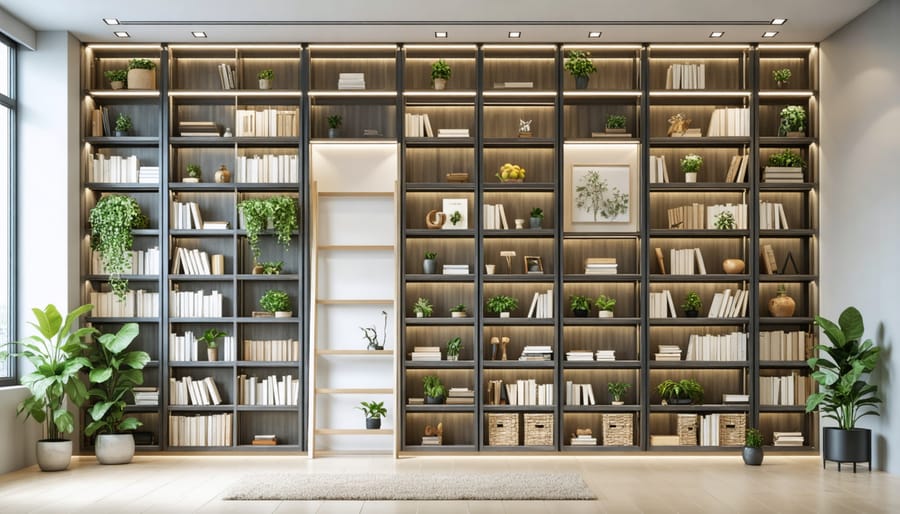
Ceiling Storage Ideas
Looking up is often the answer when floor space is at a premium. Ceiling storage solutions offer innovative ways to maximize vertical space while keeping your tiny home organized and clutter-free. Installing suspended shelving systems from your ceiling creates valuable storage without sacrificing precious floor area. Consider mounting adjustable hanging racks for clothes, cookware, or seasonal items that can be lowered when needed and raised when not in use.
Overhead storage nets and hammocks are perfect for lightweight items like pillows, blankets, and sports equipment. For a more structured approach, custom-built ceiling compartments can be integrated seamlessly into your home’s design, especially in areas with pitched roofs or unused attic space. Retractable ceiling storage units, operated by pulley systems or motorized mechanisms, offer a modern solution that combines functionality with sleek design.
Don’t forget about corners where ceiling-mounted rotating organizers can maximize awkward spaces. For frequently used items, consider installing drop-down baskets or bins near your living areas. Just remember to ensure all ceiling storage solutions are properly installed and weight-rated for safety.
Smart Room Dividers
Flexible Partitions
Flexible partitions are game-changers in tiny spaces, offering dynamic solutions that adapt to your changing needs. Sliding panels, whether made of wood, glass, or lightweight materials, can instantly transform a single room into multiple functional areas without permanent walls. These panels glide smoothly along ceiling-mounted tracks, creating temporary divisions while maintaining cohesive color schemes throughout your space.
Curtains offer a softer, more budget-friendly alternative. Choose floor-to-ceiling options in light-filtering fabrics to maintain brightness while defining separate zones. For added versatility, consider double-track systems that let you layer sheer and blackout curtains for adjustable privacy.
Movable screens bring both functionality and style to your space. Modern folding screens come in various designs, from minimalist bamboo to industrial metal frames. Position them to create impromptu workspaces, dressing areas, or cozy reading nooks. The best part? They can be easily folded and stored when not needed, making them perfect for spontaneous room reconfigurations.
Remember to select partitions that complement your existing décor while maximizing natural light flow – crucial in maintaining an airy feel in compact spaces.
Furniture as Dividers
In tiny spaces, furniture that multitasks as room dividers is a game-changing solution. Instead of installing permanent walls, consider using tall bookcases or shelving units to create distinct zones while maintaining an open feel. A well-placed bookshelf can separate your living area from your home office while providing valuable storage space on both sides.
Open-backed shelving units work particularly well as they allow light to flow through while still defining separate areas. Consider placing a console table behind your sofa to create a natural walkway and divide your living room from your dining area. For added functionality, opt for pieces with storage capabilities, like a media cabinet or a modular shelving system.
Plant stands and decorative screens can also serve as elegant dividers while adding visual interest to your space. If you need flexibility, choose furniture on wheels that can be easily moved when you want to open up the room for entertaining. Remember to maintain clear sight lines across the top of your furniture dividers to preserve the sense of spaciousness in your tiny home.
Color and Light Strategies
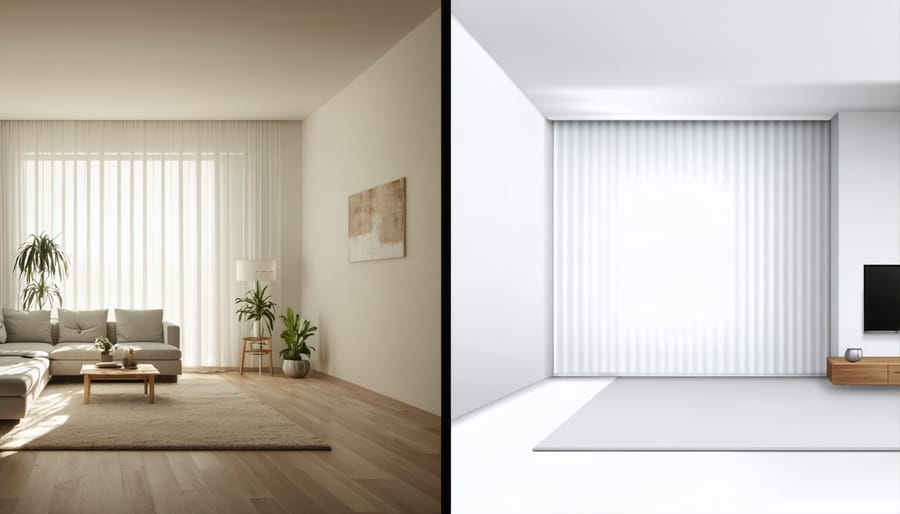
Space-Enhancing Colors
The right color palette can transform a cramped space into an airy, welcoming retreat. Light, cool tones like soft whites, pale blues, and gentle grays naturally create an illusion of depth and openness. Consider using a monochromatic scheme, which eliminates harsh visual breaks and helps walls recede. Crisp white is a timeless choice for ceilings, making them appear higher while reflecting natural light throughout the room.
For accent colors, stick to soft, muted tones rather than bold statements. Pale sage green, dusty blue, or light lavender can add personality without overwhelming the space. These colors work particularly well with modern smart home integration features, creating a cohesive, contemporary feel.
To maximize the effect, paint trim and moldings in the same color as your walls, creating an unbroken visual flow. If you’re feeling adventurous, try using lighter shades of the same color on different walls – this subtle variation adds interest while maintaining the spacious feel. Remember, high-gloss finishes can also help bounce light around the room, making it feel more expansive.
Strategic Lighting
Strategic lighting can transform the perception of your tiny space, making it feel more open and inviting. Start by maximizing natural light – keep windows unobstructed and use light, reflective window treatments that can be fully opened. For artificial lighting, adopt a layered approach using three key types: ambient, task, and accent lighting.
Mount wall sconces instead of floor lamps to save precious floor space, and consider recessed ceiling lights for clean, uncluttered overhead illumination. LED strip lighting under cabinets or along shelving creates depth while providing practical task lighting. Installing dimmer switches gives you control over light intensity throughout the day. Discover more lighting tricks to enhance your space.
Place mirrors strategically across from light sources to bounce illumination around the room and create the illusion of more space. Use uplighting in corners to draw the eye upward, making ceilings appear higher. Choose light fixtures with clear or translucent materials to maintain visual flow and prevent bulky elements from overwhelming the space.
Remember to keep color temperatures consistent throughout your lighting scheme – warm white (2700-3000K) creates a cozy atmosphere while maintaining brightness.
Tech-Smart Space Solutions
Smart Storage Systems
Modern technology has revolutionized storage solutions for tiny spaces, making organization smarter and more efficient than ever. Motion-sensor LED closet lights automatically illuminate your belongings, while motorized overhead storage racks lower at the touch of a button. Smart cabinets with built-in inventory systems help track stored items through smartphone apps, ensuring you always know what’s where.
Consider installing electronic drawer systems that open with a gentle push and close smoothly on their own. Bluetooth-enabled storage solutions can even remind you when supplies are running low or suggest optimal organization based on your usage patterns. Voice-activated storage units work seamlessly with smart home systems, allowing you to access your belongings hands-free.
For tech-savvy organizers, modular storage systems with QR code labels make item tracking a breeze. Many of these solutions can be controlled remotely, letting you check storage status or adjust climate-controlled units from anywhere. These smart storage innovations not only save space but also streamline daily living in compact homes.
Space-Saving Smart Devices
Smart technology is revolutionizing tiny space living with compact, multi-functional devices that save precious square footage. Wall-mounted smart displays double as entertainment centers and home control hubs, eliminating the need for multiple screens. Smart speakers with built-in voice assistants take up minimal counter space while managing your lighting, temperature, and security systems.
Consider investing in space-saving smart appliances like compact refrigerators with touchscreen doors that display contents without opening, or smart ovens that combine multiple cooking functions in one unit. Motorized furniture, controlled via smartphone apps, can transform your space instantly – think Murphy beds that fold away automatically or height-adjustable tables that switch from dining to work mode.
For ultimate space efficiency, look for smart storage solutions like motion-sensor closet lights and app-controlled organizing systems. These innovations not only save space but also enhance functionality, making tiny living feel luxurious and seamless.
Transforming a tiny space into a functional and beautiful home doesn’t have to be overwhelming. By implementing smart storage solutions, choosing multi-functional furniture, and using strategic design elements like mirrors and lighting, you can create a space that feels both spacious and welcoming. Remember that vertical storage, proper furniture scaling, and clever room dividers are your best allies in maximizing every square inch. Whether you’re working with a studio apartment or a compact home office, these design principles can help you achieve a perfect balance between style and functionality. Start with one area at a time, and don’t be afraid to experiment with different layouts and solutions until you find what works best for your lifestyle. With creativity and careful planning, even the smallest spaces can become extraordinary living environments that reflect your personal style while maintaining practical functionality.
